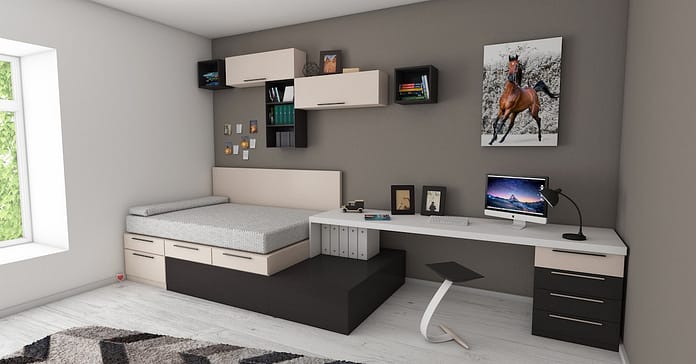Smart Home Automation
Home Automation means using technology to control things in your house. These include lights, air conditioning, security cameras, and kitchen machines. Control is done either through a central system or an app on your phone.
Imagine a world where you can use a button to make your home come alive. You can make the lights brighten, temperatures change, and many other things, all with a single touch. “Smart Home Automation” makes it easy to turn your home into a modern paradise, so you don’t have to do tedious tasks.
Home automation is a technology that helps you control and automate things in your house. You can use your phone or voice commands to switch on lights, change the temperature, check security cameras, and use appliances. It can make your life easier, save energy, and make your home safer.
Benefits of Home Automation

Home automation makes it more convenient to control household devices from a distance. It makes your home more secure by alerting you when something is wrong. You can save energy by controlling how much power is used. It also helps with daily routines like turning off lights. Here are Some Benefits:
Enhanced Convenience and Comfort
With intelligent home automation, you can control your devices and appliances anywhere. Adjust the temperature, turn on the lights, or lock the doors with a few taps. Set up a schedule for your devices to follow your routine. Come home to a well-lit and cozy environment. Use voice commands to control your smart home devices.
Improved Energy Efficiency and Cost Savings
Intelligent home automation can save energy and money. Smart thermostats can help save energy by changing temperature when needed. Intelligent lights can turn on and off when needed and adjust brightness. Smart appliances and outlets can be turned off to save energy. It can help lower bills and be more sustainable.
Critical Components of Smart Home Automation Systems
- Smart Hub: The central brain of the system connects and controls all devices.
- Sensors: Detect changes in the environment and trigger automated actions.
- Smart Thermostats: Adjust temperature settings based on preferences and energy-saving algorithms.
- Lighting Control: Enable remote operation of lights. Schedule lights for convenience and energy efficiency.
- Voice Assistants: Interact with the system through voice commands for hands-free control.
- Security Systems: Integration of cameras, alarms, and smart locks for enhanced home security.
- Motorized Shades: Control curtains and blinds to automate natural light and privacy.
- Smart Appliances: Connected devices like refrigerators, ovens, and washing machines for automation.
How to Get Started with Home Automation
Figure out what parts of your home you want to automate. Find and buy a Smart Home Automation system that meets these needs and is affordable. List devices that work with this system (like intelligent lights, thermostats, etc.). Put in the hardware (hub, Wifi, etc.) if needed. Connect the system to the devices in your home.
Install and set up the system’s controller, such as an app or voice assistant. Learn how your automation system works and what it can do. Begin by programming basic tasks like turning lights on and off at specific times. Try different settings and adjust them according to your lifestyle.
Popular Devices and Technologies in Smart Home Automation
- Smart Speakers: These voice-activated devices can control various smart home devices.
- Smart Thermostats: They allow you to adjust the temperature and save energy.
- Bright Lights: These LED bulbs can be controlled and scheduled to suit your needs.
- Smart Locks: Secure your home with keyless entry and remote access features.
- Smart Cameras: Watch your home and receive alerts for suspicious activities.
- Smart Plugs: Turn any regular appliance into an intelligent device by controlling its power.
- Smart Smoke Detectors: Get instant notifications and protect your home from fire hazards.
- Smart Irrigation Systems: Save water by automating your garden watering based on weather conditions.
- Intelligent Doorbells: See, hear, and speak to visitors from your smartphone or tablet.
- Smart Entertainment Systems: Enjoy seamless control over your audio and video devices.
Also Read: How AI Makes Weather Better and Cheaper

Frequently asked questions about home automation.
What is intelligent home automation?
Home automation is a system of hardware, communication, and electronic devices that work together.
What are the benefits of a smart home?
You can control your energy use more in an intelligent house while automating.
What are the three common uses of home automation?
Home automation applications include lighting control, HVAC, outdoor grass irrigation, kitchen appliances, and security systems. These systems help make your home more convenient and secure.
Conclusion
In Conclusion, Smart Home Automation offers convenience, comfort, and efficiency. You can control devices and appliances through a central system or smartphone app. It also improves security and can help save money by optimizing temperature and controlling lighting. You can make your home modern and intelligent with speakers, thermostats, and cameras.

